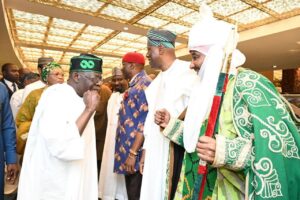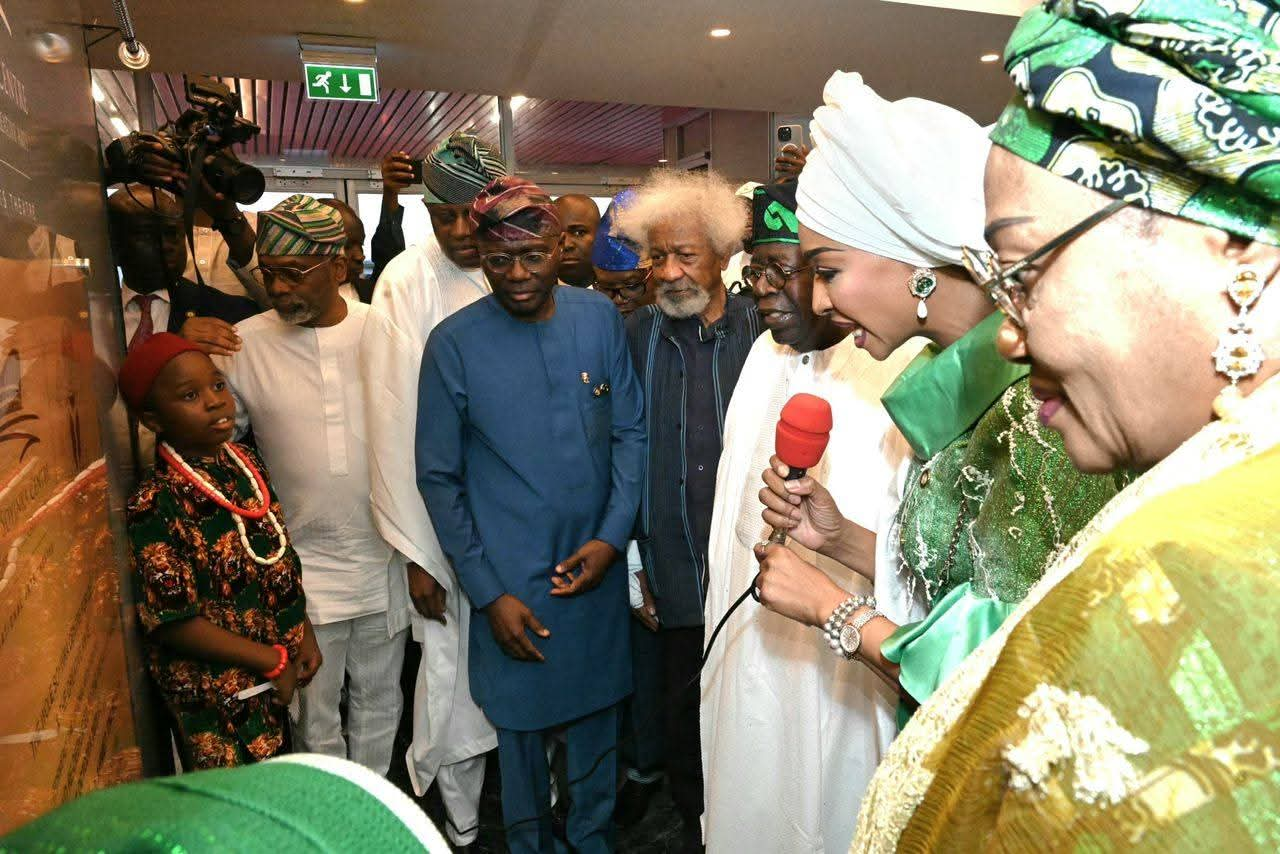Nigeria has reopened the National Arts Theatre in Lagos, renaming it the Wole Soyinka Centre for Culture and the Creative Arts in honour of the country’s Nobel Laureate.
The unveiling took place on Nigeria’s 65th Independence Day, with President Bola Ahmed Tinubu leading dignitaries, artists, and international guests to witness the transformation of a building once left in ruins.
The project, funded by the Central Bank of Nigeria (CBN) and the Bankers’ Committee, cost ₦68 billion and delivered a complete overhaul of the FESTAC ’77 landmark. Structural upgrades, modern stage technology, refurbished auditoriums, and new public facilities have been added. Authorities also announced plans to develop adjoining hubs for film, music, fashion, and IT, positioning the centre as a new anchor for Nigeria’s creative economy.
President Tinubu described the reopening as a milestone for Nigeria’s culture and a promise for its creative future. “This is more than a building; it is a symbol of Nigeria’s cultural pride and creative future. The investment here proves that our nation values its heritage as much as its economic growth,” the president said.
He also called for the establishment of an endowment fund to guarantee maintenance and sustainability. “We must not allow this monument to fall into disrepair again. A dedicated endowment will ensure that the centre remains vibrant and relevant for generations,” Tinubu added.
A Landmark Restored
The ceremony marked the end of a five-year rehabilitation project. The National Theatre, once regarded as the jewel of Nigeria’s arts, closed after its roofs leaked, structures decayed, and wiring became unsafe. Its collapse forced major events to migrate to other venues. The federal government handed the facility to the CBN and the Bankers’ Committee in 2020, paving the way for the massive investment that has now revived the complex.

President Bola Ahmed Tinubu with the Emir of Kano
Soyinka Reacts
For Prof. Wole Soyinka, the honour came with ambivalence. He recalled near-tragedies during past performances in the old, dilapidated building. leaks, power failures, and even electrocution risks.
“I have mixed feelings,” Soyinka admitted. “This hall holds memories of both triumph and frustration. I am grateful for the honour, but I also urge those in charge to ensure this rescue is not temporary. Let this not be another cycle of neglect.”
Soyinka’s candour struck a chord with many in attendance, underscoring the cautionary lesson of past decades when the theatre, once the pride of FESTAC ’77, was left to rot due to poor maintenance and lack of clear management.
Industry Response
Artists and cultural stakeholders praised the reopening but urged careful management. They warned that without transparent governance and affordable access, the centre could again slip into neglect. “This should not be another one-off rescue mission,” one arts advocate told journalists. “The real test is whether this centre thrives beyond today’s fanfare.”
Looking Ahead
The Wole Soyinka Centre now stands as both a restored landmark and a symbol of Nigeria’s ambition to lead Africa’s creative economy. As fireworks lit the Lagos skyline to close the ceremony, the centre’s relaunch was seen not just as a return to history, but as a leap toward a global cultural future.







Comment